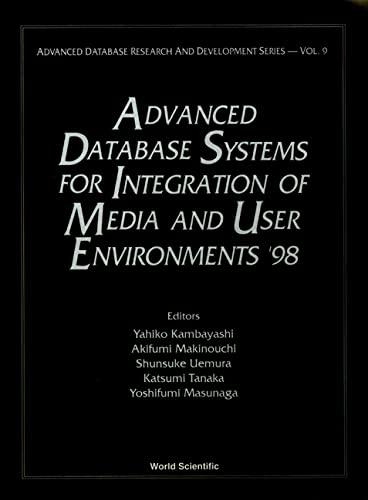Question
This is a problem about transaction processing for a special database application. The database consists of a small number of data items, and all the
This is a problem about transaction processing for a special database
application. The database consists of a small number of data items, and all
the transactions are of one of the following two types.
(i) Update transactions with only one operation, a write step writing
one data item. (These do not have any read steps.)
(ii) Scan transactions with only read operations, one read step for each
data item; the read steps are not ordered. (These do not have any write steps.)
For all the following questions, assume that the correctness criterion for
concurrent executions is conflict-serializability (of the committed transactions)
with the additional constraint that each pair of non-interleaved transactions
occurs in the same order in an equivalent serial history as in the history
produced by the scheduler, that is, order-preserving conflict-serializability.
Design the following schedulers. Schedulers discussed in class for general
databases may be used here also. Try some simplification or optimization
which may be possible for this special database application. If you think you
cannot simplify/optimize, explain why. All the properties you attribute to
your schedulers must be proven, at least informally.
1.(a) Design a 2PL based scheduler for this database
system.
(b) Are deadlocks possible? If so, suggest a method of avoiding or resolving
deadlocks.
2. Design a timestamp based scheduler.
3. Design BOCC and FOCC schedulers assuming that
only validation phase is in the critical section, that is, the write phase will
be concurrent with the read phases and write phases of other transactions.
4. Give an example of a non-serializable history (of read and
write steps, and no commit or abort steps). For this question alone, assume
that the database consists of only three items A, B, and C.
5. Assuming that the schedules are log-recoverable, design an
efficient crash recovery algorithm. You can choose redo-winners or redohistory
paradigm. Indicate, informally, the simplifications or modifications
of the algorithm (during the normal operation, redo pass and undo pass)
given in the book.
Justify the correctness informally.
There is no language constraint, use any programming language to answer the question(generalized answer is expected in a pseudo code form).
Step by Step Solution
There are 3 Steps involved in it
Step: 1

Get Instant Access to Expert-Tailored Solutions
See step-by-step solutions with expert insights and AI powered tools for academic success
Step: 2

Step: 3

Ace Your Homework with AI
Get the answers you need in no time with our AI-driven, step-by-step assistance
Get Started


